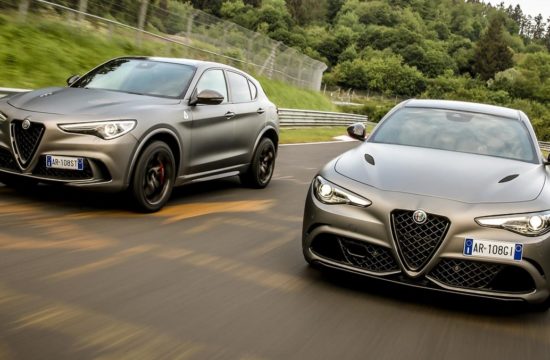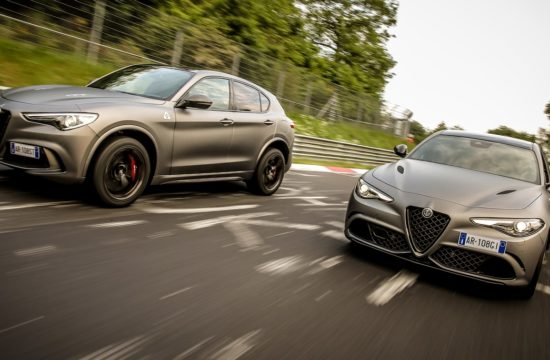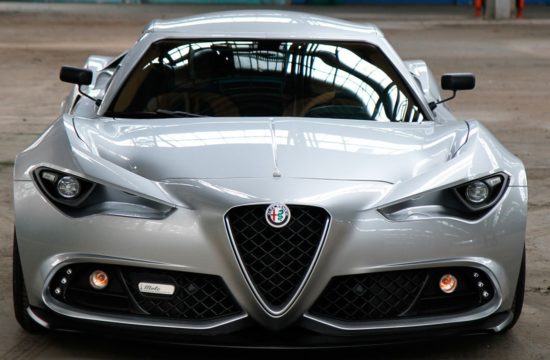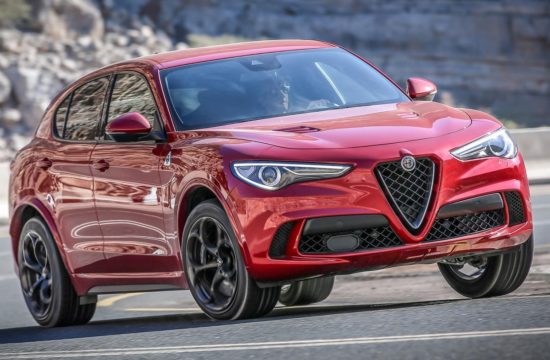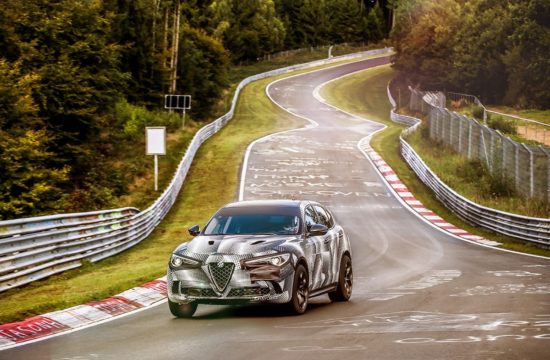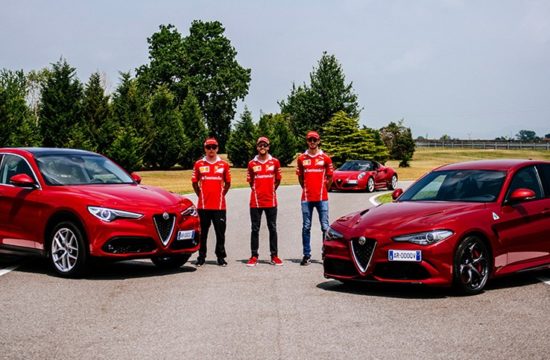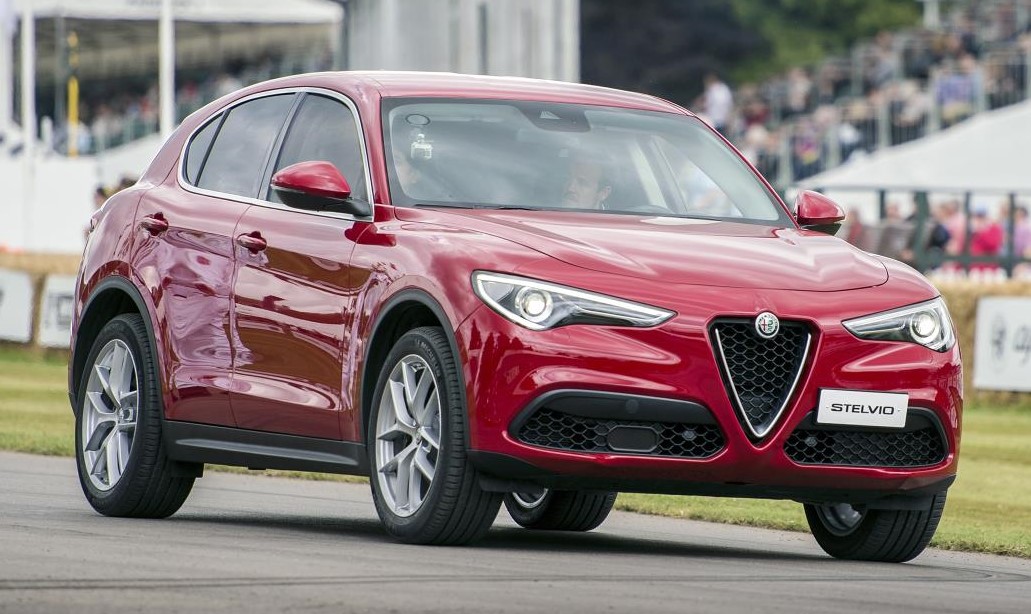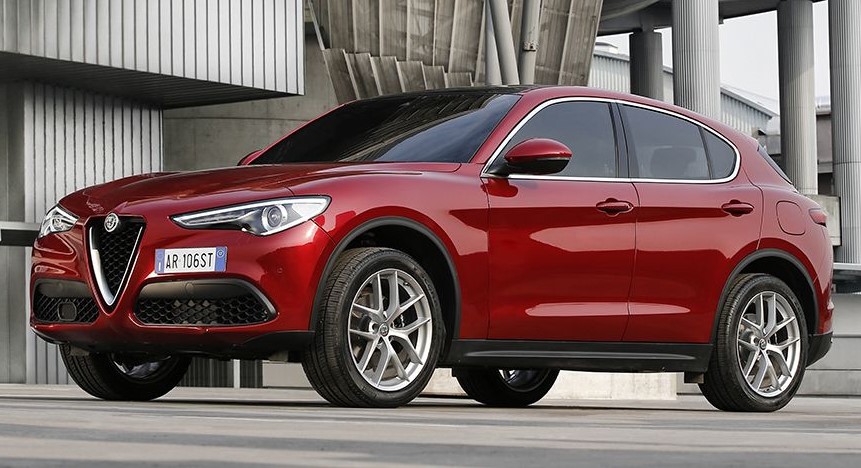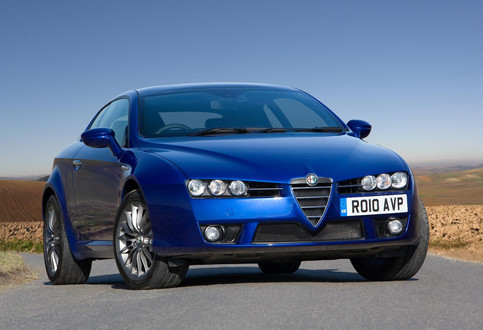
Alfa Romeo has increased the appeal of Brera Coupe and Spider by adding a pair of new petrol and diesel engines to the range of this stunning cars. These powerplants include 200 bhp 1750 TBi petrol and the 170 bhp 2.0 JTDM diesel. The petrol nit delivers 200 bhp and 320 Nm of torque, while the more efficient diesel has 170 bhp with 360 Nm of torque.
Apart form the engines, the new models are also available now with the exclusive Italia Independent trim level, which includes matt black titaniuim finish, 18” black opaque ‘turbine’ design alloy wheels, red brake calipers and Alfa 8C inspired aluminium fuel cap on the outside, and a sporty black leather bound steering wheel and gear knob with red stitching, carbon-fibre trim inserts, sports dials, black sports leather upholstered seats with Italia Independent branded headrests, aluminium sports pedals and foot rest, and a high-tech radio/sat-nav sytem inside the cabin.
Alfa Romeo’s new engines in detail:
1750 TBi 200 BHP TURBO PETROL ENGINE
The new Alfa Romeo 1750 TBi engine embodies a long heritage of motoring excellence. The new, lightweight, variable valve timing, direct injection turbocharged engine develops an impressive 200 bhp along with 320 Nm of torque to bring new levels of drivability to the Alfa Brera and Spider range.
Perfectly complementing the current engine line-up, the new 16-valve, twin overhead camshaft 1742 cc petrol unit promises keen fuel efficiency, along with much lower CO2 emissions, down to 189 g/km for the Alfa Brera and 192 g/km for the Alfa Spider.
Significantly, through a process known as ‘scavenging’, the maximum torque of Alfa Romeo’s new petrol engine is achieved at just 1400 rpm – little more than tickover speed – with maximum power developed between 4750 and 5500 rpm.
From a standstill, the 1750 TBi engined Alfa Brera and Alfa Spider reach the 0 – 62 mph acceleration benchmark in virtually identical times of 7.7 and 7.8 seconds respectively, before both topping out at 146 mph. However it is the on-road flexibility of the in-gear acceleration that sets the engine apart from its competitors – offering a more sporting driver experience consistent with a ‘flat’ torque curve and a constant delivery of power – perfect for confident overtaking and relaxed long distance driving.
Routine maintenance intervals for the 1750 TBi version will be set at every 21,000 miles.
2.0 JTDM 170 BHP DIESEL ENGINE
Given that Alfa Romeo introduced common rail diesel technology more than 10 years ago on the Alfa 156, it should come as little surprise that a new diesel unit has now been developed that brings higher power and torque values, yet, at the same time, increases fuel efficiency and lowers CO2 emissions.
Alfa’s 2.0 JTDM powerplant develops 170 bhp available at just 4,000 rpm, and the latest incarnation of its MultiJet technology means that the 2.0 JTDM unit delivers its maximum torque of 360 Nm between just 1750 rpm and 2500 rpm.
Significantly, the new 2.0 JTDM powered Alfa Brera and Alfa Spider cover the 0 – 62 mph sprint in just 8.8 and 9.0 seconds respectively, and possess a top speed of 135 mph. CO2 emissions are reduced to just 142 g/km – putting these vehicles into one of the lower road charge tax bands.
Routine maintenance intervals for the 2.0 JTDM version are set at every 21,000 miles.
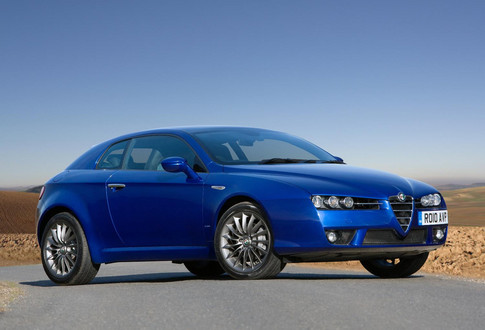
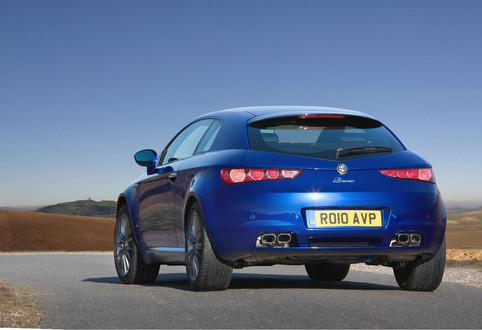

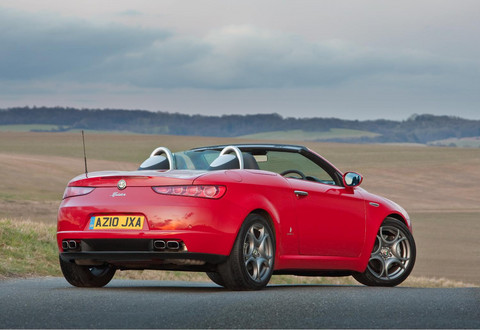
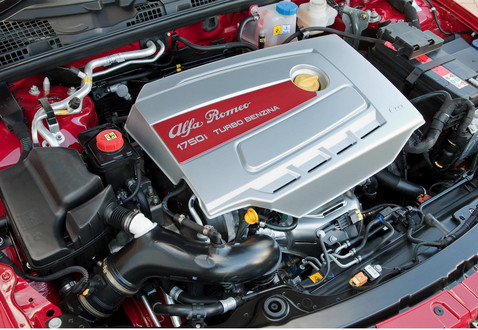
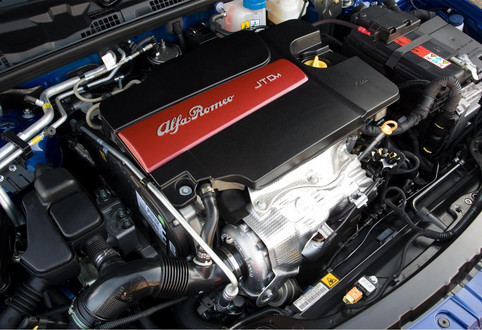
TECHNICAL SPECS:
ALFA BRERA
| Characteristics | 1750 TBi | 2.0 JTDM |
| No of cylinders, arrangement | 4 in line, transverse front mounted | 4 in line, transverse front mounted |
| Bore x stroke (mm) | 83 x 80.5 | 83 x 90.4 |
| Displacement (cc) | 1742 | 1956 |
| Compression ratio | 9.5 : 1 | 16.5 : 1 |
| Max power output bhp (kW-EC) at rpm | 200 (147) 5000 | 170 (125) 4000 |
| Peak torque Nm(kgm-EC) at rpm | 320 (32.7) 1400 | 360 (36.7) 1750 |
| Timing system | 2 OHC, 4 valves per cylinder, variable valve timing, direct injection Belt drive, roller rocker arms | 2 OHCs (toothed belt), hydraulic tappets, 4 valves per cylinder, MultiJet direct injection with turbocharger and intercooler |
| Fuel feed | Direct injection with turbocharger integrated with ignition, scavenging functional mode | Bosch EDC 16C39 electronic engine management system |
| ELECTRICAL SYSTEM (12V) | ||
| Battery: capacity (Ah) / Generator (A) | 90/120 | 90/100 |
| TRANSMISSION | ||
| Drive | Front | Front |
| Number of gears Final ratio | 6 + 1R – 3.545 | 6 + 1R – 3.545 |
| TYRES | ||
| Standard version | 225/50 R 17 | 225/50 R 17 |
| STEERING SYSTEM | ||
| Steering system | Rack and pinion with power steering | Rack and pinion with power steering |
| Steering diameter kerb-to-kerb m) | 10.7 | 10.7 |
| SUSPENSION | ||
| Front | Independent with double wishbones and anti-roll bar anchored via ball joints | Independent with double wishbones and anti-roll bar anchored via ball joints |
| Rear | Independent with Multilink design | Independent with Multilink design |
| BRAKES – (DISCS) | ||
| Front (mm) | Ventilated 330 x 28 D, fixed aluminium calliper with four 42 mm pistons | Ventilated 330 x 28 D, fixed aluminium calliper
with four 42 mm pistons |
| Rear (mm) | Solid 292 x 22 D, combined 42 mm floating calliper | Ventilated 292 x 22 D, combined 42 mm floating calliper |
| WEIGHTS – TANK CAPACITY | ||
| Fuel tank (l) | 70 | 70 |
| Kerb weight DIN (kg) | 1430 | 1480 |
| Max towable weight (kg) | 1450 | 1500 |
| PERFORMANCE | ||
| Top speed mph (km/h) | 146 (235) | 135 (218) |
| Acceleration (driver + 30 kg) 0-62 mph (s) | 7.7 | 8.8 |
| 0-1000 m (s) | 28.9 | 30.2 |
| FUEL CONSUMPTION – EMISSIONS* | ||
| urban cycle mpg (l/100 km) | 23.9 (11.8) | 39.8 (7.1) |
| extra-urban cycle mpg (l/100 km) | 47.1 (6.0) | 64.2 (4.4) |
| combined cycle mpg (l/100 km) | 34.9 (8.1) | 52.3 (5.4) |
| Exhaust emissions – CO2 (g/km) | 189 | 142 |
| Emissions Standard | Euro 5 | Euro 5 |
| ALFA SPIDER |
| Characteristics | 1750 TBi | 2.0 JTDM |
| No of cylinders, arrangement | 4 in line, transverse front mounted | 4 in line, transverse front mounted |
| Bore x stroke (mm) | 83 x 80.5 | 83 x 90.4 |
| Displacement (cc) | 1742 | 1956 |
| Compression ratio | 9.5 : 1 | 16.5 : 1 |
| Max power output bhp (kW-EC) at rpm | 200 (147) 5000 | 170 (125) 4000 |
| Peak torque Nm(kgm-EC) at rpm | 320 (32.7) 1400 | 360 (36.7) 1750 |
| Timing system | 2 OHC, 4 valves per cylinder variable valve timing, direct injection Belt drive, roller rocker arms | 2 OHCs (toothed belt), hydraulic tappets, 4 valves per cylinder,
MultiJet direct injection with turbocharger and intercooler |
| Fuel feed | Direct injection with turbocharger integrated with ignition, scavenging functional mode | Bosch EDC 16C39 electronic engine management system |
| ELECTRICAL SYSTEM (12V) | ||
| Battery: capacity (Ah) / Generator (A) | 90/120 | 90/100 |
| TRANSMISSION | ||
| Drive | Front | Front |
| Number of gears Final ratio | 6 + 1R – 3.545 | 6 + 1R – 3.545 |
| TYRES | ||
| Standard version | 225/50 R 17 | 225/50 R 17 |
| STEERING SYSTEM | ||
| Steering system | Rack and pinion with power steering | Rack and pinion with power steering |
| Steering diameter kerb-to-kerb m) | 10.7 | 10.7 |
| SUSPENSION | ||
| Front | Independent with double wishbones and anti-roll bar anchored via ball joints | |
| Rear | Independent with Multilink design | |
| BRAKES – (DISCS) | ||
| Front (mm) | Ventilated 330 x 28 D, fixed aluminium calliper with four 42 mm pistons | Ventilated 330 x 28 D, fixed aluminium calliper with four 42 mm pistons |
| Rear (mm) | Solid 292 x 22 D, combined 42 mm floating calliper | Ventilated 292 x 22 D, combined 42 mm floating calliper |
| WEIGHTS – TANK CAPACITY | ||
| Fuel tank (l) | 70 | 70 |
| Kerb weight DIN (kg) | 1490 | 1540 |
| Max towable weight (kg) | 1450 | 1500 |
| PERFORMANCE | ||
| Top speed mph (km/h) | 146 (235) | 135 (218) |
| Acceleration (driver + 30 kg) 0-62 mph (s) | 7.8 | 9.0 |
| 0-1000 m (s) | 29.2 | 30.5 |
| FUEL CONSUMPTION – EMISSIONS* | ||
| urban cycle mpg (l/100 km) | 23.7 (11.9) | 39.8 (7.1) |
| extra-urban cycle mpg (l/100 km) | 46.3 (6.1) | 64.2 (4.4) |
| combined cycle mpg (l/100 km) | 34.5 (8.2) | 52.3 (5.4) |
| Exhaust emissions – CO2 (g/km) | 192 | 142 |
| Emissions Standard | Euro 5 | Euro 5 |
*according to 1999/100EC directive

